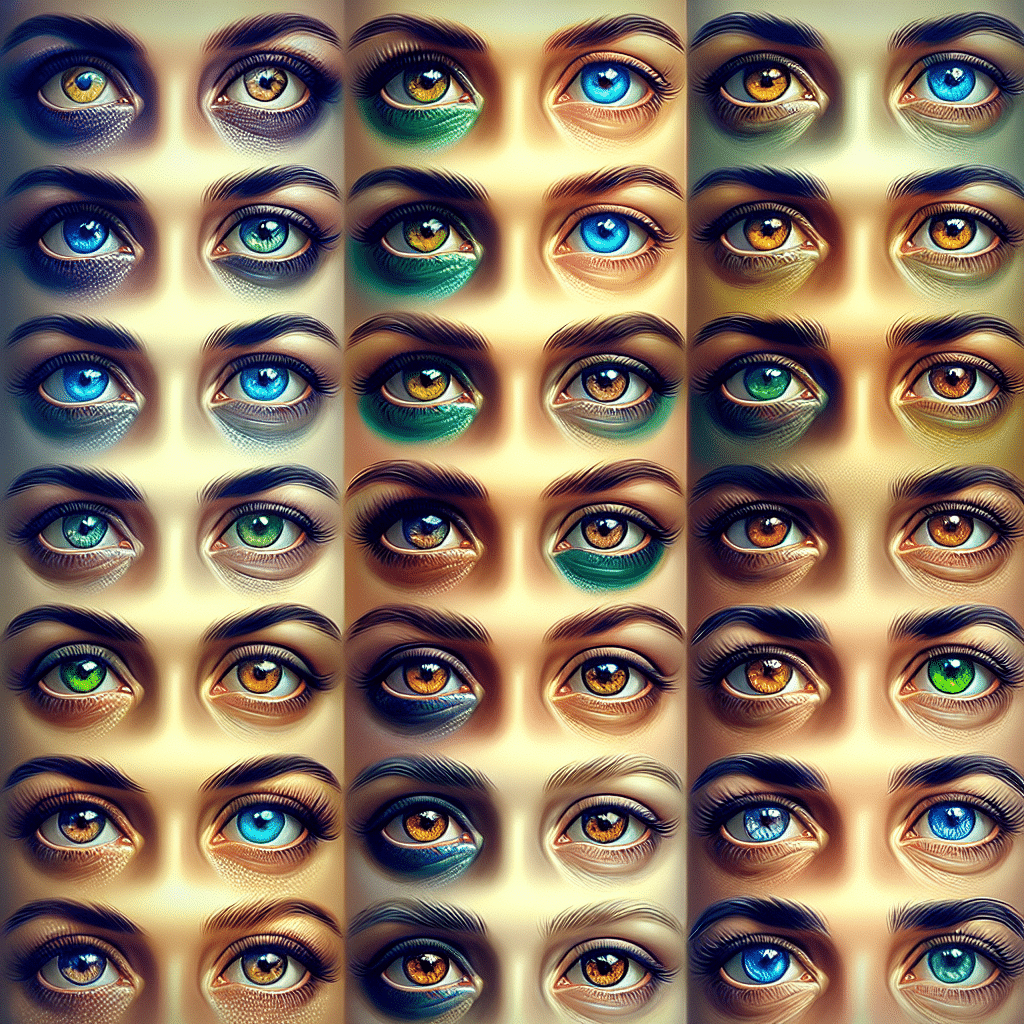Eye Colors of Celebrities
In the world of celebrities, eye color is often a topic of fascination. Fans are curious to know the eye color of their favorite movie stars, actors, and actresses. In this section, we will explore the eye color of two well-known celebrities: Ben Affleck and Mustafa Kemal Atatürk.
Ben Affleck’s Eye Color
Ben Affleck, the talented actor and filmmaker, has been captivating audiences for years. When it comes to his eye color, Ben Affleck is known for his mesmerizing hazel eyes (PurseBlog Forum). The combination of brown and green tones in hazel eyes creates a unique and striking appearance.
It’s worth noting that eye color can sometimes appear differently depending on lighting, clothing, and other factors. However, the general consensus is that Ben Affleck’s eyes fall within the hazel spectrum.
Mustafa Kemal Atatürk’s Eye Color
Mustafa Kemal Atatürk, the founder of modern Turkey, is a historical figure known for his leadership and significant contributions. While there are limited resources and photographs that provide insight into his eye color, it is believed that Mustafa Kemal Atatürk had brown eyes. However, due to the scarcity of detailed information, it’s important to approach this information with caution.
The eye colors of celebrities often become subjects of curiosity and admiration, adding to their unique appeal. For more information on the eye colors of other famous personalities, check out our articles on Meryl Streep’s eye color, Leonardo DiCaprio’s eye color, Robert De Niro’s eye color, and many more.
Understanding the eye colors of celebrities not only satisfies curiosity but also highlights the diversity and beauty of human eye colors.
Ben Affleck’s Eye Color
When it comes to the eye color of celebrities, fans often wonder about the unique features that make their favorite movie stars stand out. In the case of Ben Affleck, the truth about his eyes has been a subject of curiosity among many. Contrary to the blue eyes of his “Good Will Hunting” co-star Matt Damon (Bright Lights Film Journal), Ben Affleck’s eye color has been described as hazel (PurseBlog Forum).
Hazel eyes, often characterized by a combination of brown, green, and gold tones, can appear different depending on lighting conditions and surrounding colors. This variability in color adds to the unique charm of hazel eyes, making them captivating and intriguing.
While Ben Affleck’s eye color has been described as hazel, it’s important to note that eye colors can be subjective, and individual perceptions may vary. The appearance of eye color can also be influenced by factors such as lighting, clothing, and makeup choices. Nonetheless, Ben Affleck’s eyes have captivated audiences throughout his career, adding to his overall appeal as an actor.
To explore more about the eye colors of other famous celebrities, you can check out our articles on Meryl Streep’s eye color, Leonardo DiCaprio’s eye color, Robert De Niro’s eye color, Natalie Portman’s eye color, and many more.
Famous Celebrities and Their Eye Colors
Curious about the eye colors of your favorite movie stars? Let’s take a look at two well-known celebrities and their eye colors.
Matt Damon’s Blue Eyes
Matt Damon, the talented actor known for his roles in movies like “Good Will Hunting” and the “Bourne” series, has captivating blue eyes. His piercing blue gaze has become one of his trademark features, adding to his on-screen charisma and charm. The unique shade of blue adds depth and intensity to his overall appearance, making him a heartthrob for many fans around the world.
Jennifer Lopez’s Eye Color
Jennifer Lopez, the multi-talented singer, actress, and dancer, has mesmerizing brown eyes. Her deep brown eyes are often described as warm and expressive, perfectly complementing her stunning features. Jennifer Lopez’s eyes radiate confidence and allure, capturing the attention of audiences everywhere she goes. Her eye color adds to her natural beauty and contributes to her overall captivating presence.
Knowing the eye colors of celebrities adds an extra layer of fascination to their on-screen performances and public personas. Stay tuned for more interesting facts about celebrities and their eye colors in our upcoming articles.
Internal links:
- meryl streep eye color
- leonardo dicaprio eye color
- robert de niro eye color
- natalie portman eye color
- tom hanks eye color
- denzel washington eye color
- sandra bullock eye color
- brad pitt eye color
- julia roberts eye color
- morgan freeman eye color
- joaquin phoenix eye color
- cate blanchett eye color
- johnny depp eye color
- angelina jolie eye color
- george clooney eye color
- kate winslet eye color
- matt damon eye color
- jennifer lawrence eye color
- edward norton eye color
- emma stone eye color
- daniel day-lewis eye color
- nicole kidman eye color
- christian bale eye color
- anne hathaway eye color
- hugh jackman eye color
- amy adams eye color
- javier bardem eye color
- sean penn eye color
- ryan gosling eye color
- charlize theron eye color
- al pacino eye color
- scarlett johansson eye color
- russell crowe eye color
- michelle pfeiffer eye color
- viola davis eye color
- jeremy renner eye color
- samuel l. jackson eye color
- jessica chastain eye color
- michael fassbender eye color
- saoirse ronan eye color
- mahershala ali eye color
- chris hemsworth eye color
- lupita nyongo eye color
- mark ruffalo eye color
- riz ahmed eye color
- tom hardy eye color
- brie larson eye color
- mark wahlberg eye color
The Impact of Eye Color
Eye color can have a significant impact on how individuals are perceived and the cultural significance attached to certain eye colors. Let’s explore the influence eye color has on perception and its cultural significance.
Eye Color and Perception
Eye color has long been associated with various personality traits and stereotypes. While these associations are not based on scientific evidence, they can still influence how individuals are perceived in society. For example, blue eyes are often associated with qualities such as intelligence, attractiveness, and trustworthiness, while brown eyes are sometimes associated with warmth and approachability (Quora).
It’s important to note that these associations are subjective and can vary across cultures and individuals. Eye color should not be used as a sole determinant of a person’s character or abilities. Instead, it’s essential to focus on understanding and appreciating the unique qualities and talents each individual possesses.
Cultural Significance of Eye Color
Eye color can hold cultural significance in different parts of the world. In some cultures, certain eye colors are considered more desirable or attractive than others. For example, in some societies, individuals with lighter eye colors, such as blue or green, may be seen as more exotic or captivating.
However, it’s crucial to recognize that beauty standards and preferences can vary widely across cultures. What is considered desirable in one culture may not hold the same significance in another. It’s essential to embrace and celebrate the diversity of eye colors and other physical features across different cultures and societies.
Eye color should be celebrated as part of an individual’s unique identity rather than a factor that determines their worth or value. Each eye color has its own beauty and charm, and it’s important to appreciate and respect the diversity of eye colors in our global community.
By understanding the impact of eye color on perception and appreciating the cultural significance attached to it, we can foster a more inclusive and accepting environment where individuals of all eye colors are celebrated for their individuality and inherent worth.
Eye Color Myths and Facts
When it comes to eye color, there are several common misconceptions that have been perpetuated over time. In this section, we will debunk these myths and provide factual information about eye color.
Common Misconceptions
One prevalent myth is that all actors have blue eyes. While blue eyes are indeed common among some actors, it is not true for all of them. For instance, Ben Affleck, a well-known actor, has brown eyes, as confirmed by various sources (Bright Lights Film Journal). Eye color can vary among individuals, regardless of their profession.
Another misconception is that all people can be categorized into a few distinct eye color categories, such as blue, green, or brown. In reality, eye color exists on a spectrum and can vary in shades and combinations. Factors such as genetics and pigmentation play a role in determining an individual’s eye color.
Eye Color Genetics Explained
Eye color is determined by the amount and distribution of melanin, a pigment produced by specialized cells in the iris. The two main types of melanin responsible for eye color are eumelanin (brown or black pigment) and pheomelanin (yellow or red pigment). The combination and concentration of these pigments determine the final eye color.
The inheritance of eye color is a complex process influenced by multiple genes. While it was once believed that eye color was determined by a single gene, it is now understood to be influenced by several genetic factors. The precise interplay of these genes can result in a wide range of eye colors observed in different individuals.
Eye color inheritance follows a complex pattern involving both dominant and recessive genes. For example, brown eye color is more dominant, while blue eye color is typically recessive. However, it is important to note that eye color inheritance can be influenced by various genetic and environmental factors, making it challenging to predict with certainty.
Understanding the science behind eye color genetics helps dispel myths and provides a clearer picture of the fascinating diversity seen in people’s eyes.
By unraveling common misconceptions and shedding light on the genetic factors influencing eye color, we can appreciate the uniqueness and beauty of each individual’s eyes. Eye color is a complex trait that goes beyond simple categorizations, and its diversity among celebrities and everyday people is a testament to the wonders of genetics.



